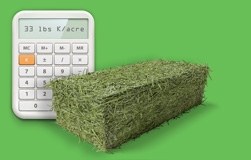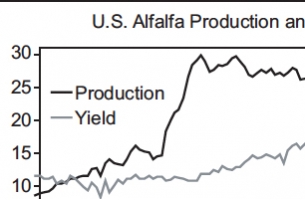12 Keys to the Queen of Forage Crops
With the goal of achieving 30 strong seedlings per square foot, the quality and quantity of your alfalfa yield are nothing to leave to chance. Oklahoma State University developed a helpful 12-point checklist on Alfalfa Stand Establishment1. Use these steps to help optimize yield and the nutritional quality of your alfalfa crop.
Protassium+® premium sulfate of potash fertilizer provides the potassium and sulfate sulfur that are key to the vigor and quality of your alfalfa crop.
#1 – Site Selection
Alfalfa thrives in soil that is deep, fertile and well-drained.
#2 – Soil Testing
Test and apply any needed nutrients per analysis results.
#3 – Field Prep
Plow, level, and drain low areas.
#4 – Seedbed Refinement
Create a firm, level and small-clod seedbed.
#5 – Variety Choice
Select adapted, pest-resistant varieties.
#6 – Seed Quality
Use weed-free, clean seed with good germination.
#7 – Planting Date
Sow between March 15th and April 15th.
#8 – Seed Placement
Cover seeds with ½” to ¾” of soil and press.
#9 – Sowing Rate
10-12 lb of seed/acre.
#10 – Planting Equipment
Calibrate equipment for correct seed application.
#11 – Seed Inoculation
Use a seed inoculant containing alfalfa-specific rhizobia species.
#12 – Pest Control
Stay vigilant against weeds, insects and diseases.
One more key to keep in mind.
While potassium is extremely important to the alfalfa plant, sulfur is also essential, especially in the sulfate form, which allows for immediate uptake by the plant. Protassium+ premium sulfate of potash provides the potassium and sulfate sulfur that are key to the vigor and quality of your alfalfa crop.
Keeping these keys in mind is sure to keep the "Queen" happy.
1Alfalfa Stand Establishment, D. Redfeam, R. Huhnke, J. Armstrong, B. Arnall, Oklahoma State University, PSS-2089




